

JAPANESE PRINTS
A MILLION QUESTIONS
TWO MILLION MYSTERIES
Ukiyo-e Prints浮世絵版画 |
|
formerly
Port Townsend, Washington now Kansas City, Missouri |
| UTAGAWA KUNISADA |
| 歌川国貞 |
| 1786-1865 |
| Title: "A GIRLS' DANNOURA" |
| 見立娘壇ノ浦 |
| Date: 1843-46 |
|
Censor's Seal: Hama (Hama Yahei - 浜弥兵衛)
濱 |
|
Publisher: Kogaya Katsugorō
版元: 古賀屋勝五郎 |
|
Print Size: Left Panel 14 5/8" x 10 1/8"; Central Panel 14 5/8" x 9 3/4"; Right Panel 14 1/2" x 9 7/8" |
| Mat Size: 19" x 34 1/4" |
|
$690.00 SOLD! THANKS R! |
|
There are other copies of this triptych in the collection of the National Diet library and in the Boston Museum of Fine Arts. |
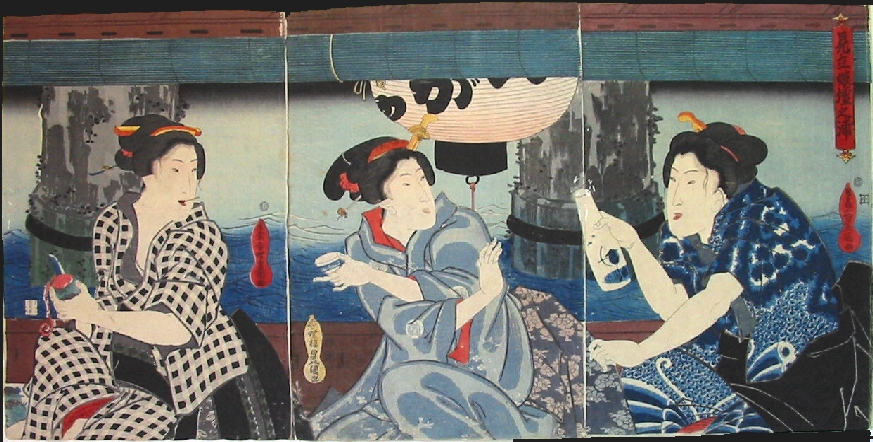 |
|
ALAS, POOR YORICK AND JAPANESE PRINTS BOTH SUFFER THE INDIGNITIES OF WORMS |
|
|
|
|
|
Years ago I gave tours of a famous Chinese painting collection in a major American museum. There was one very long hand scroll of a landscape. I think it was by Hsia Kuei, but can't recall for sure. Anyway, while showing it I pointed out a small round repair on one end of the scroll. It was hardly noticeable. Then I pointed out another one a little to the left. A little to the left of that one was another and another and another and another. If memory serves me each one was fractionally larger than the last one. Then I asked the viewers to explain these restorations to me. Sometimes a visitor guessed that it had been insect damage and that was correct. I would then point out that the scroll had been rolled up when an insect began eating its way into it. Naturally as it got deeper into the painting it was growing larger and hence the larger holes.
The same principal holds true for much of the damage seen on Japanese prints. Often they were mounted in albums and as the worm ate its way through it caused mirrored-like damage. That is what I suspect happened with this triptych.
Recently someone wrote to me and asked for more details about the damage described in the 'condition' report seen above. That is when I decided it would simply be best to show it. (Truth in advertising.) Below are two close up photos of the worm holes and the one at the bottom showing the holes where the prints were threaded into an album. |
|
|
|
|
|
|
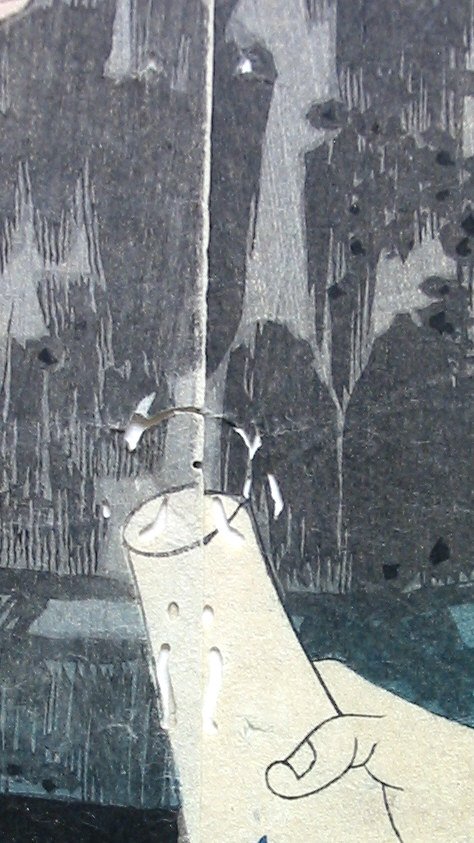 |
|
|
|
|
|
|
| AND THEN THERE ARE STAINS AND SOILING | |
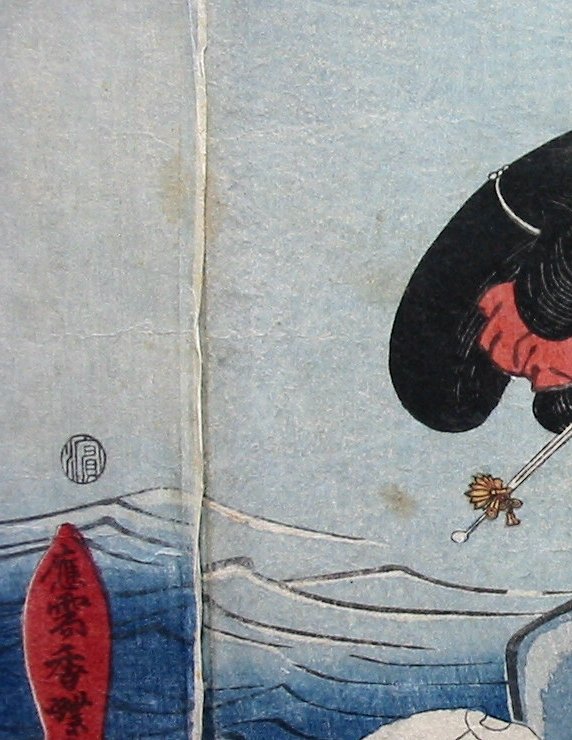 |
|
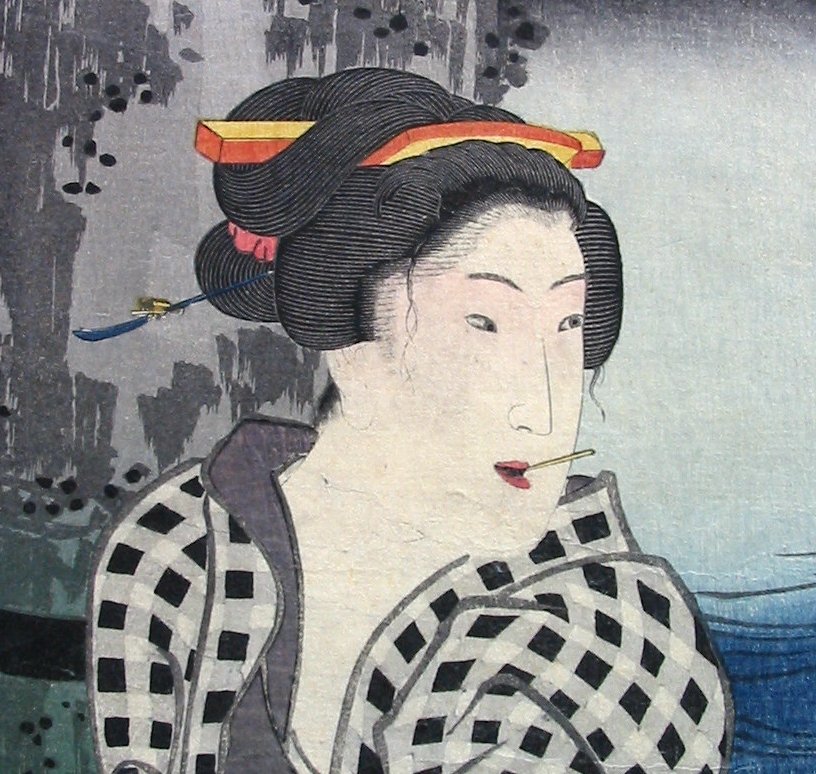 |
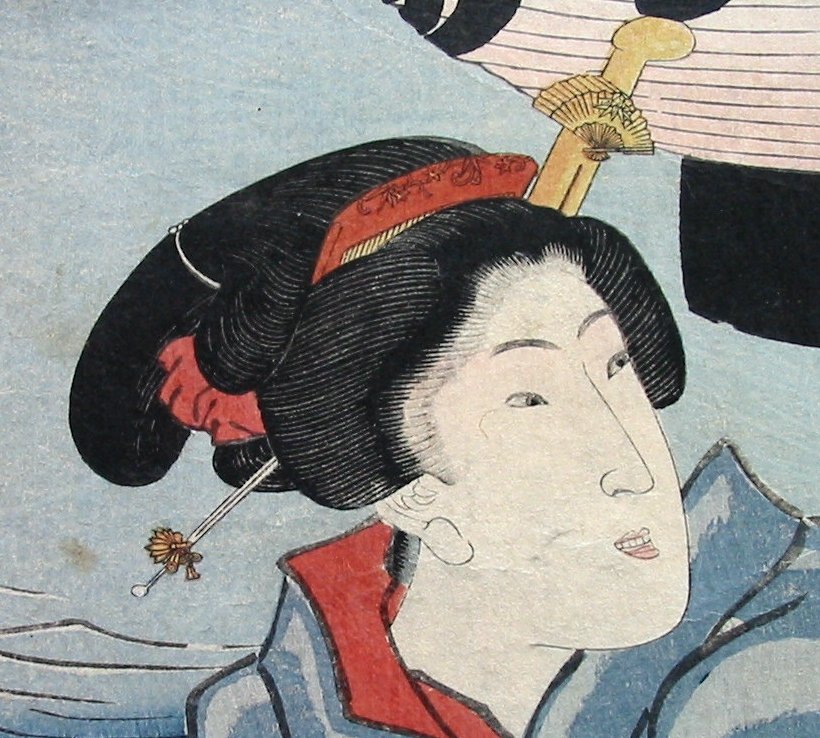 |
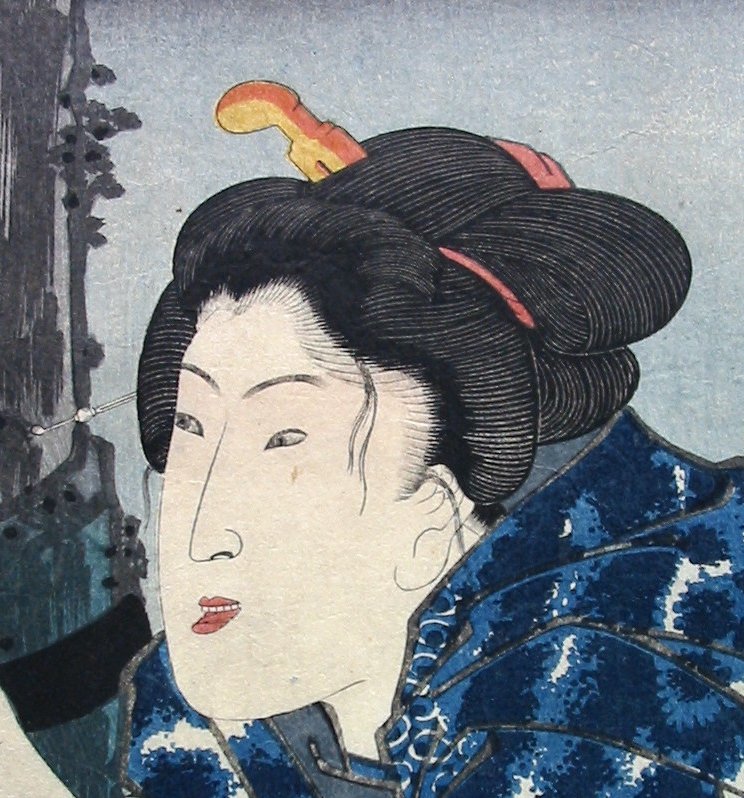 |
| WHAT IS SO IMPORTANT ABOUT THESE SIGNATURES? | ||
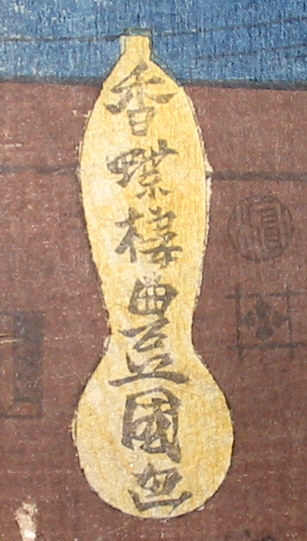 |
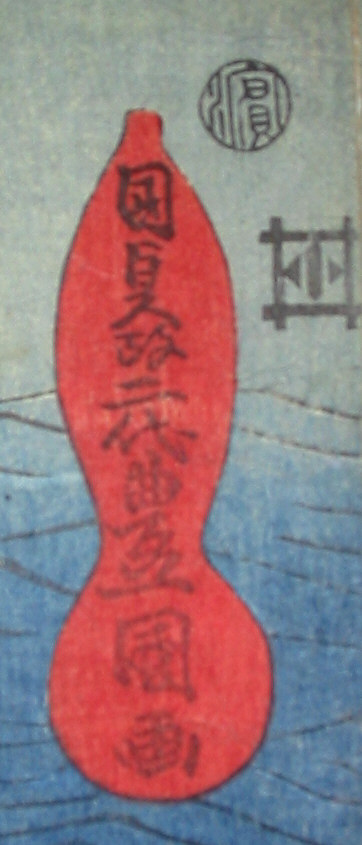 |
|
|
Signature: Kōchōrō Toyokuni ga |
Signature: Kunisada aratame nidaime Toyokuni ga |
|
| 香蝶楼豊国画 | 国貞改弐豊国画 | |
|
For those of you are interested the most complete listing of Kunisada/Toyokuni III signatures which I have found in an English language publication appear in What About Kunisada? by Jan van Doesburg and published by the Huys den Esch in 1990. Toward the back of this little volume are 88 signature reproductions plus numerous other seals. This is a very helpful tool for anyone trying to confirm or figure things out. I do have one criticism: there is no list of illustrated publisher marks. |
||
| Title cartouche | ||
 |
||
|
THE BATTLE OF DANNOURA |
|
The final crushing defeat of the Taira (平) clan by the Minamoto (源氏) took place on April 25, 1185 at the Shimonoseki Strait. This brought to an end a six year struggle which has since been immortalized in the Tale of Heike.
One month earlier Minamoto no Yoshitsune (源義経) had defeated the Taira at the battle of Yashima. Decimated the remainding four to five thousand Minamoto retinue sought refuge on boats "...at the westernmost exit of the Inland Sea." Yoshitsune with a smaller but more skillful fleet out manouevered his enemy in a half-day battle. The defeated admiral and many of his surviving followers drowned themselves. Even the seven year old Emperor Antoku (安徳天皇) who was a grandson of Taira no Kiyomori (平清盛) was drowned. Kiyomori's heir was captured and executed soon thereafter thus ending the Taira dominance of the last twenty five years. |
|
|
|
If life weren't confusing enough trying to sort out the who is who and the what is what comprehending Japanese names is like comprehending the Abbott and Costello routine of "Who's on First?" The Taira are the Heike clan and the Minamoto are the Genji. |
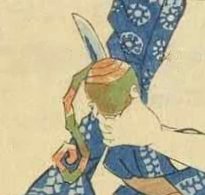 |
|||
|
Kunisada had a knack for elegantly portraying everyday acts performed by beautiful and sexy women. In the detail above from the early 1820s a mother is paring a piece of fruit for her child. The position of her hands and the knife are almost exactly the same as those of the woman in the right hand panel of the triptych featured on this page. |
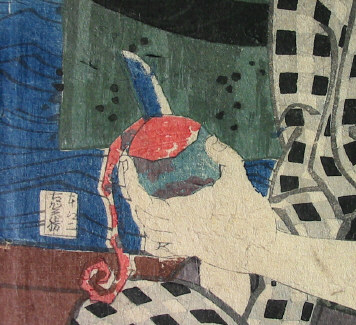 |
||
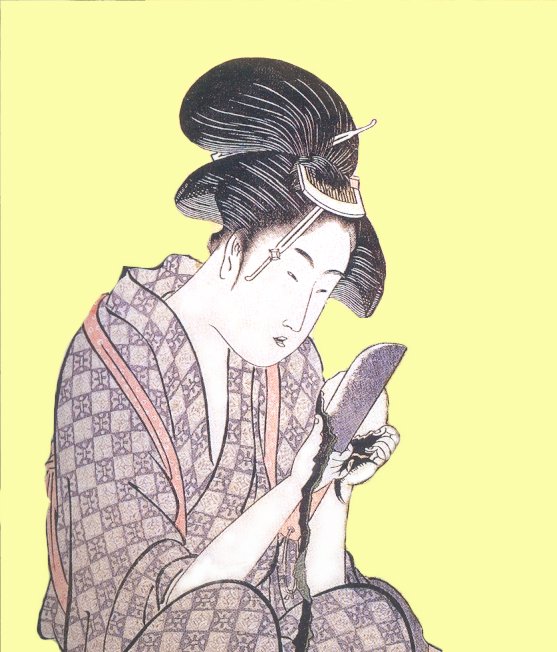 |
||
|
As you can see from this detail from an Utamaro print this particularly mundane action was recorded lovingly in print form at least fifty years before Kunisada's example. Surely Kunisada knew this image. It takes nothing away from his work, but may indirectly pay a kind of homage to his revered predecessor. |